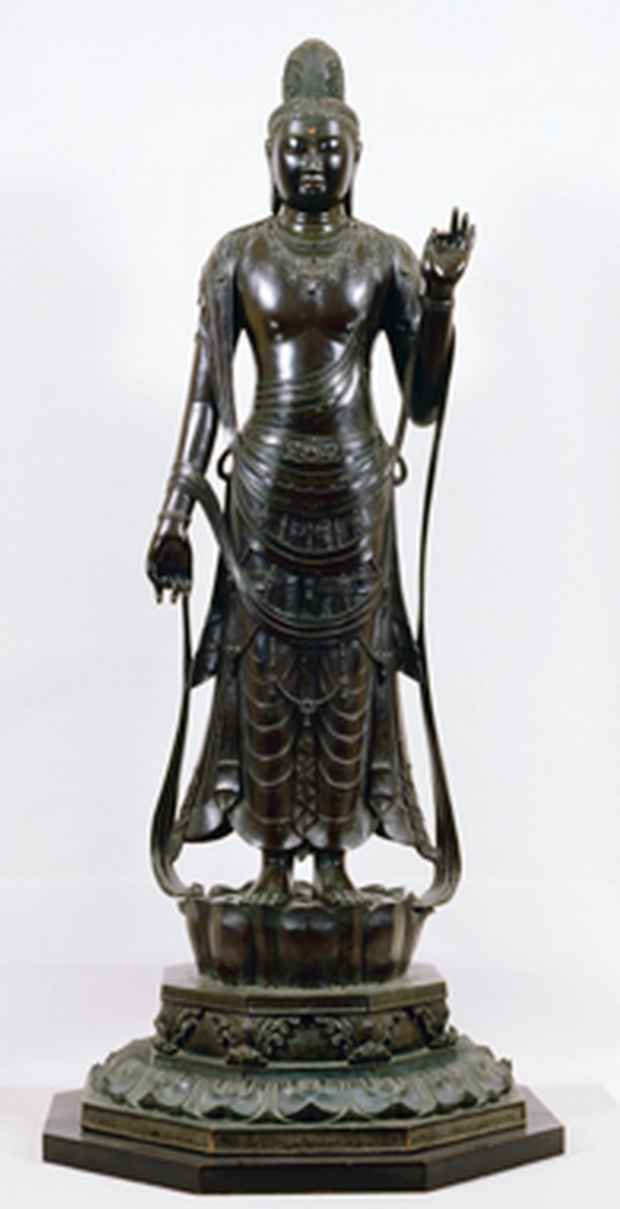Hakuhō, The First Full Flowering of Buddhist Art in Japan
Nara National Museum

Standing Shō Kanzeon bosatsu (Sk. Arya Avalokiteśvara) Yakushiji temple, Nara
This event has ended.
Hakuhō is a term that refers to the period that extends from the latter half of the seventh century until the year 710, when the capital was moved to Heijōkyō (present-day Nara). The word has been used since pre-war times in the fields of art history and archaeology to distinguish these years as a distinct historical era. The many extant gilt-bronze Buddhist icons, repoussé Buddhist images, and works of the applied arts, such as tiles, that were created during the period allow us to sense the vigor and fervor devoted to building Buddhist temples and creating icons. It was as if in the roughly one hundred years since the importation of Buddhism, the great tree of Buddhist art, which had firmly taken root in the soil of Japan, blossomed all at once, filling the air with fresh new spirit.
This exhibition, which commemorates the 120th anniversary of the opening of Nara National Museum, displays in a single venue an unprecedented number of approximately 150 works representative of the artists and artisans as well as the archaeological artifacts of the Hakuhō period, providing an opportunity for the re-discovery of the charm of Hakuhō.
[Related Events]
There will be a series of Japanese lectures throughout the exhibition period. Please refer to the official site for further details.
Media
Schedule
from July 18, 2015 at 9:30 to September 23, 2015 at 17:00
Opening times: On Fridays and Aug.5 (Wed) - Aug.15 (Sat), open until 19:00 (last admission 18:30). Closed on Mondays (with the exception of Jul.20, Aug.10, and Sept.21). Closed on Jul.21.